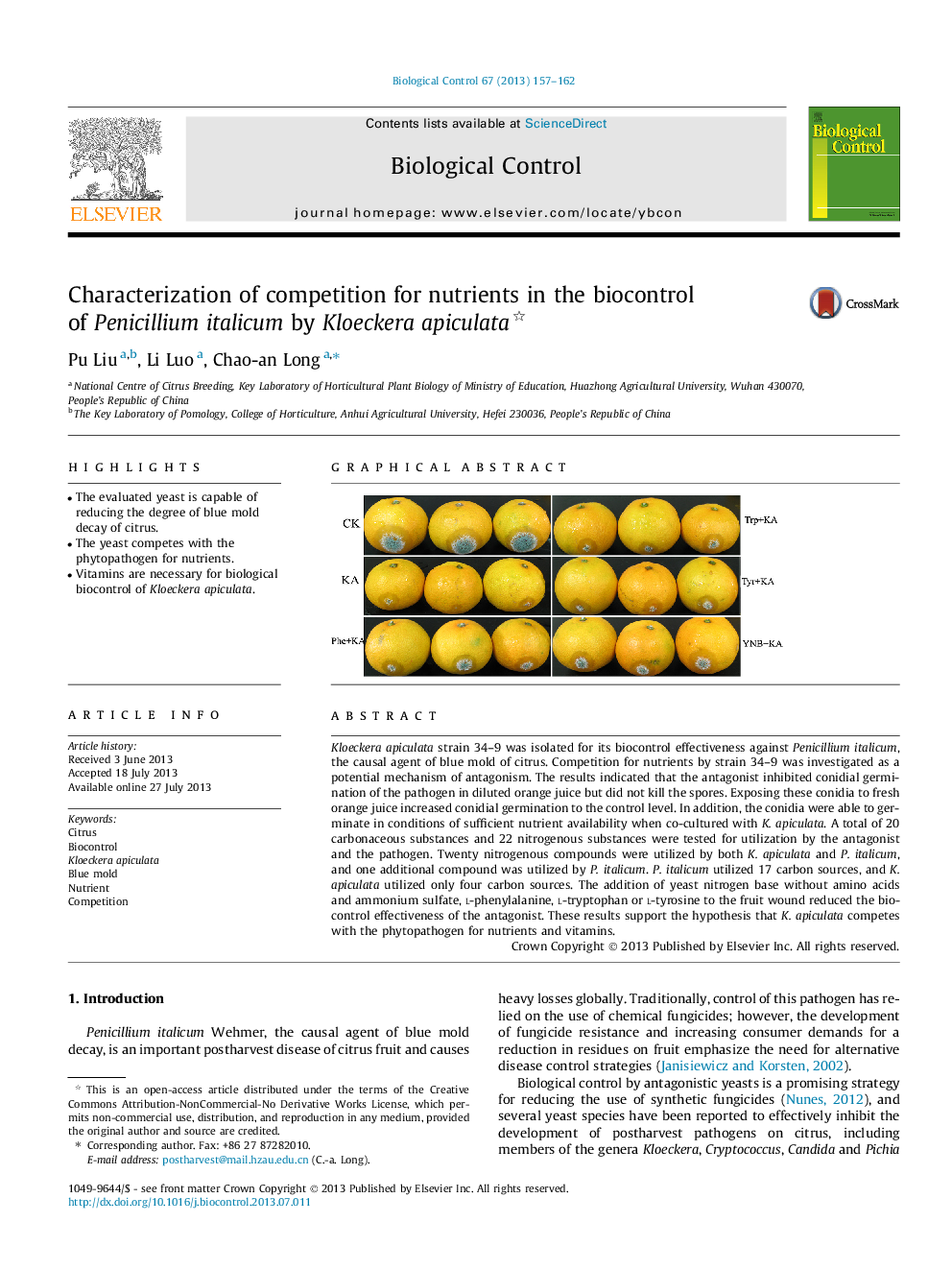| Article ID | Journal | Published Year | Pages | File Type |
|---|---|---|---|---|
| 4504046 | Biological Control | 2013 | 6 Pages |
•The evaluated yeast is capable of reducing the degree of blue mold decay of citrus.•The yeast competes with the phytopathogen for nutrients.•Vitamins are necessary for biological biocontrol of Kloeckera apiculata.
Kloeckera apiculata strain 34–9 was isolated for its biocontrol effectiveness against Penicillium italicum, the causal agent of blue mold of citrus. Competition for nutrients by strain 34–9 was investigated as a potential mechanism of antagonism. The results indicated that the antagonist inhibited conidial germination of the pathogen in diluted orange juice but did not kill the spores. Exposing these conidia to fresh orange juice increased conidial germination to the control level. In addition, the conidia were able to germinate in conditions of sufficient nutrient availability when co-cultured with K. apiculata. A total of 20 carbonaceous substances and 22 nitrogenous substances were tested for utilization by the antagonist and the pathogen. Twenty nitrogenous compounds were utilized by both K. apiculata and P. italicum, and one additional compound was utilized by P. italicum. P. italicum utilized 17 carbon sources, and K. apiculata utilized only four carbon sources. The addition of yeast nitrogen base without amino acids and ammonium sulfate, l-phenylalanine, l-tryptophan or l-tyrosine to the fruit wound reduced the biocontrol effectiveness of the antagonist. These results support the hypothesis that K. apiculata competes with the phytopathogen for nutrients and vitamins.
Graphical abstractFigure optionsDownload full-size imageDownload as PowerPoint slide
